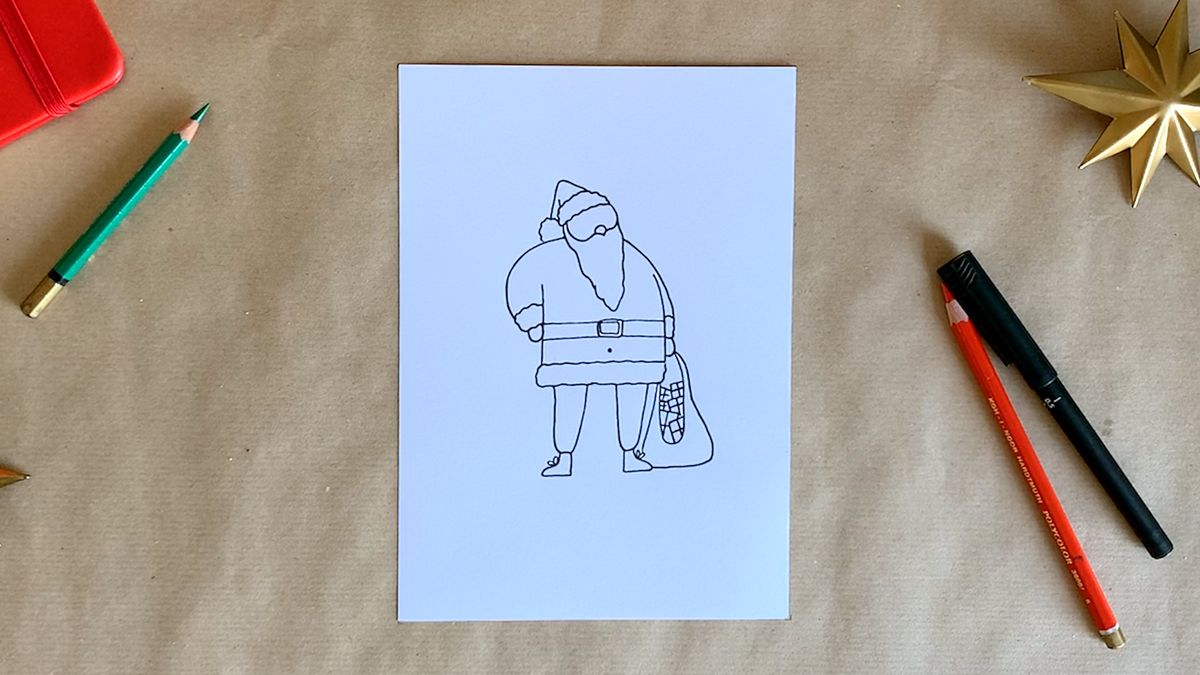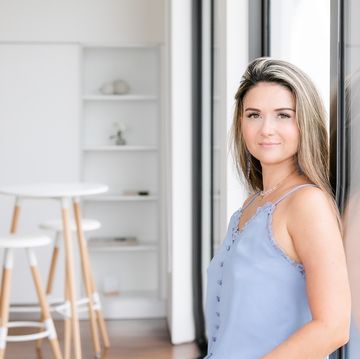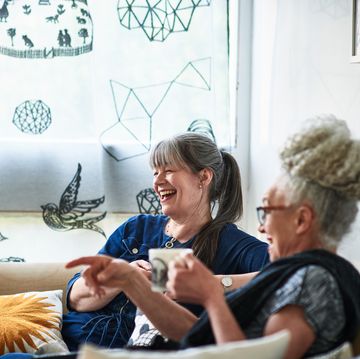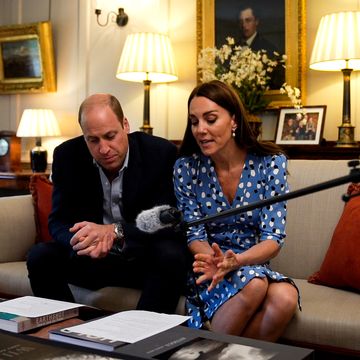Flexibility is a vital component of fitness, which is often overlooked. Maintaining your muscles is important for keeping everyday activities easy and doable – helping to prevent injury such as back pain, and for allowing your joints to work optimally and move through their greatest range of movement.
There are many ways to improve flexibility, from effective stretches that you can do as part of an easy-to-follow home routine, to more structured flexibility workouts such as a yoga class. Incorporate these moves into your routine to limber up...
1. Yoga
Yoga is at the top of the list when it comes to flexibility. Whatever your flexibility goal, there's something for everyone when it comes to yoga. A yoga style such as Yin or Hatha yoga may be a good first port-of-call if flexibility is your focus.
Yin yoga works at a different pace with an emphasis on really lengthening out, breathing and generally un-winding. (See below for two of our favourite poses to try at home).
2. Keep your warm up dynamic
Skipping your warm up is a no-no when it comes to staying flexible. Not only do you potentially increase the risk of injury, you're also missing out on a golden opportunity to improve flexibility.
Including moves that recruit multiple muscle groups such as multi-directional lunges, bridges with an arm extension and a high-knee skip will help to improve mobility both during and after your workout.
3. Vary your stretching
Both static and dynamic stretching have their place when it comes to your flexibility. Static stretching, where you hold the stretch, can be helpful in improving range of movement in a joint, but is best left to post-workout when muscles are warm.
Pre-workout, it's a good idea to include movement in your stretches. Rotational lunges, hugging your knee to your chest and arm circles all work well to improve flexibility as you prepare the body for exercise.
4. Dancing
Not only does the extensive warm-up a dance classes offers boost flexibility, using muscles and joints in a variety of ways through dance movements will also help lengthen them out.
Zumba is one of the most popular dance-based classes – all that shoulder-rolling and hip-swirling, not to mention the direction changes, will do wonders for your flexibility.
5. Pilates
While the main focus of Pilates is the core, moves such as The Saw, Spine Stretch and Neck Pull all help to improve flexibility everywhere from inner thighs and hips to upper back and neck.
There's also a strong focus on posture in Pilates which can help to prevent muscles from becoming overworked and over tight in the first place.
6. Tai chi
Dubbed meditation in motion, not only is tai chi a fantastic way to relax, the continuous, flowing practice of moving from one posture to another, as well as the gentle, mobilising warm up, makes tai chi an excellent method of improving flexibility.
Try these simple yoga poses at home
These are our fave flexibility moves, guaranteed to help keep you feeling loser and longer from top to toe:
Downward Facing Dog
This is a great pose for stretching out your back and your hamstrings – when hamstring muscles get tight, they can cause lower back pain. It also works your upper body.
- Start on all fours ensuring hands are positioned under shoulders with fingers pointing forward.
- Push into the floor and raise your hips into the air continuing until legs are as straight as you can get them (don't lock your knees) and your body has formed an inverted 'V' shape.
- Keep your shoulders relaxed, back straight and head relaxed. Press heels into the floor as you inhale and exhale deeply 3-4 times.
- Return to starting position and repeat twice more.
Child's pose
This pose stretches out upper and lower back and the top of your buttocks.
- From a kneeling position, lower your bottom towards your heels.
- Bend forward from the waist so that your arms out are outstretched on the floor in front of you.
- Your stomach should be resting gently on top of your thighs while your forehead rests on the mat.
- Hold for 30 seconds.
Kneeling hip flexor stretch
Maintaining flexibility in the hip flexors is vital for maintaining good mobility in the hip joint, and will help prevent both hip and lower back pain.
- Kneel on the ground with your right knee on the floor and right foot behind you.
- Place your hands on top of your front (left) thigh and bend the left knee to 90 degrees.
- Begin by pressing the hips forward, allowing your left knee to bend.
- Continue pressing forward, lowering hips and bottom until a stretch is felt in the front of the right hip/top of the thigh.
- Hold for 10-30 seconds, change sides and repeat.
Doorway chest stretch
This effective upper body stretch can help ease tension from muscles that easily become tight and overused, especially if you work at a desk for long periods of time.
- Stand in a doorway, bend right arm so elbow's at a 90-degree angle and place your forearm on the doorway, with upper arm parallel to the floor.
- Lean into the stretch pushing against the doorway at the same time as rotating upper body away slightly from your arm.
- Hold for 10-30 seconds, switch to left arm and repeat.

Laura Williams is a fitness expert of 20 years. She runs her own London-based fitness business, always enjoying the challenge of creating effective-and-palatable fitness solutions. Laura’s qualifications include Advanced Gym Instruction, Nutrition and Weight Management, Sports Conditioning, and an NCFE CACHE Level 2 in Mental Health Awareness.















